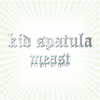 Question: What could be worse than a CD comprised entirely of boringold side-project material never before deemed worthy of release?Answer: Two CDs of boring old side-project material never before deemedworthy of release. Unfortunately, that painfully true witticism onlyscratches the surface of just how wholly disappointing the latest KidSpatula (aka µ-Ziq) album truly is. To put it even more bluntly, Meast is Mike Paradinas' Drukqs,a meandering double disc journey through the foul dregs of hisproverbial cutting room floor. Regular readers of my snidecontributions here in The Brain might recall my favorable and at timesglowing review of the last µ-Ziq album, so rest assured that thisvitriolic reaction comes from someone who regularly enjoys Paradinas'smusic. Haphazardly throwing together previously unavailable tracks from1994-1998 in a way that would make even Richard D. James blush hardlymakes for enjoyable listening, let alone reviewing. My respect forParadinas' already available work during this time period (whichincludes In Pine Effect and Lunatic Harness) made it allthe more difficult to sit through this bland, unbalanced and all-in-alluninteresting affair. A significant number of tracks sound likeincomplete sketches and abandoned ideas that should have either beenworked on further or abandoned altogether. The peppy childlike melodiesof "Trike" repeat without moving the song in any direction worthnoting, cutting off its potential less than halfway through. "LocalJogger" opens with a gorgeous mesh of synth patches that quickly takesa trip downhill into a kind of kitschy pseudo 70's TV theme songnostalgia. Though it may sound unreasonably harsh, the content of theentire second disc could have been left off without much quality beinglost, save for the opening electro-hop cut "Sad & Solid." Only onetrack managed to extract any enthusiasm on my part: "Housewife"combines synth guitar goofiness and a naughtily recorded personal adover a funky dance groove for a result that warrants repeatedlistening. Though I imagine they already own Meast, evenParadinas and Planet µ completists would do well to avoid or ignorethis dismal effort from an electronic music legend. Anyone else stillhungry for some good Paradinas work should snatch up thestill-available Rephlex reissue of the classic Tango N' Vectif.
Question: What could be worse than a CD comprised entirely of boringold side-project material never before deemed worthy of release?Answer: Two CDs of boring old side-project material never before deemedworthy of release. Unfortunately, that painfully true witticism onlyscratches the surface of just how wholly disappointing the latest KidSpatula (aka µ-Ziq) album truly is. To put it even more bluntly, Meast is Mike Paradinas' Drukqs,a meandering double disc journey through the foul dregs of hisproverbial cutting room floor. Regular readers of my snidecontributions here in The Brain might recall my favorable and at timesglowing review of the last µ-Ziq album, so rest assured that thisvitriolic reaction comes from someone who regularly enjoys Paradinas'smusic. Haphazardly throwing together previously unavailable tracks from1994-1998 in a way that would make even Richard D. James blush hardlymakes for enjoyable listening, let alone reviewing. My respect forParadinas' already available work during this time period (whichincludes In Pine Effect and Lunatic Harness) made it allthe more difficult to sit through this bland, unbalanced and all-in-alluninteresting affair. A significant number of tracks sound likeincomplete sketches and abandoned ideas that should have either beenworked on further or abandoned altogether. The peppy childlike melodiesof "Trike" repeat without moving the song in any direction worthnoting, cutting off its potential less than halfway through. "LocalJogger" opens with a gorgeous mesh of synth patches that quickly takesa trip downhill into a kind of kitschy pseudo 70's TV theme songnostalgia. Though it may sound unreasonably harsh, the content of theentire second disc could have been left off without much quality beinglost, save for the opening electro-hop cut "Sad & Solid." Only onetrack managed to extract any enthusiasm on my part: "Housewife"combines synth guitar goofiness and a naughtily recorded personal adover a funky dance groove for a result that warrants repeatedlistening. Though I imagine they already own Meast, evenParadinas and Planet µ completists would do well to avoid or ignorethis dismal effort from an electronic music legend. Anyone else stillhungry for some good Paradinas work should snatch up thestill-available Rephlex reissue of the classic Tango N' Vectif.
Two new shows just for you. We have squeezed out two extended release episodes for this weekend to get you through this week. They contain mostly new songs but there's also new issues from the vaults. The first show features music from Rider/Horse, Mint Field, Robert Aiki Aubrey Lowe, Anastasia Coope, ISAN, Stone Music, La Securite, Bark Psychosis, Jon Rose, Master Wilburn Burchette, Umberto, Wand, Tim Koh, Sun An, and Memory Drawings. The second episode has music by Laibach, Melt-Banana, Chuck Johnson, X, K. Yoshimatsu, Dorothy Carter, Pavel Milyakov, Violence Gratuite, Mark Templeton, Dummy, Endon, body / negative, Midwife, Alberto Boccardi, Divine. Cow in Maui from Veronika in Vienna. Get involved: subscribe, review, rate, share with your friends, send images! |



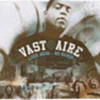 Damn you, second CD by a well-known-by-music-geeks artist. You've just reminded me of a simple but harsh truth: those debut CDs that music geeks love so much are often the product of years of music-writing experience, filtered through a trusted collaborator's sense of what is actually worth releasing. Second CDs, unfortunately, often aren't.
Damn you, second CD by a well-known-by-music-geeks artist. You've just reminded me of a simple but harsh truth: those debut CDs that music geeks love so much are often the product of years of music-writing experience, filtered through a trusted collaborator's sense of what is actually worth releasing. Second CDs, unfortunately, often aren't.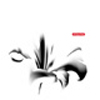 Even if this had been released four years ago (when Uwe Zahn was on topof his game) I would not be impressed. From his earliest releases onthe Din label, Uwe Zahn created a kind of electronic music that rivaledthe beauty and multiplicity of other well-known composers of the time.His formula has been and still is simple: write great melodies, addgreat harmonies, and layer them over manifold rhythms crafted out ofcrystal, glass, and metal timbres. Whereas this formula served as thebasis for the excellent Atol Scrap and Tides before, it has somehow degraded into the elementary and overly-naïve Lilies,now. There are wonderous moments to be found in the melodies still andthe rhythms retain their deceptively simple groove, but for some reasonthey don't mesh as well as they have in the past. It's as thoughArovane has become too simple, too brief, and suddenly concerned withthe mortal. Past endeavours were not only beautiful, but they soundedtimeless; it was as though time were standing still for Arovane and hismusic. The opening "Ten Hours" negates that magical power somehow andeach of the songs following it only put Lilies in a furtherdefinite place and time. On the plus side, Zahn still sounds more incontrol of his work than any of his contemporaries do. Whether or not Ilike it, Lilies sounds like a concentrated effort, fully shapedby its creator. "Instant Gods Out of the Box" is an excellent exampleof how electronic music can still look to its roots without beingfrozen in them and without diving into the realm of pureacademic vomit. "Pink Lilies" features gorgeous vocals over a rollingand dynamic interplay between bass, percussion, and keyboard melody.It's a prime example of how to mix traditional vocals with thesynthetic sound of computer composition. Zahn's sound hasn't changeddrastically in the last few years, but his writing has slippednoticably away from the confrontational or exuberant. Maybe this isbecause it all sounds a bit derivative or maybe it's just because Lilies sounds like such an innocent and childlike record. Where Atol Scrap blew me away with its effort to escape into the stratosphere, Liliessounds disappointingly terrestrial. The closing "Good Bye Forever" onlyreminds me of my mortal body, my absurd tasks, and my inability to betruly timeless. This isn't a terrible record, but I don't find myselfreaching for it like I have for past Arovane albums. That isn't too saythat Arovane is behind his contemporaries, either: I'm still more fondof and taken by his work than I am by certain "grade-Ae" manipulators who have found it necessary to make records for engineers and professors instead of music-lovers.-
Even if this had been released four years ago (when Uwe Zahn was on topof his game) I would not be impressed. From his earliest releases onthe Din label, Uwe Zahn created a kind of electronic music that rivaledthe beauty and multiplicity of other well-known composers of the time.His formula has been and still is simple: write great melodies, addgreat harmonies, and layer them over manifold rhythms crafted out ofcrystal, glass, and metal timbres. Whereas this formula served as thebasis for the excellent Atol Scrap and Tides before, it has somehow degraded into the elementary and overly-naïve Lilies,now. There are wonderous moments to be found in the melodies still andthe rhythms retain their deceptively simple groove, but for some reasonthey don't mesh as well as they have in the past. It's as thoughArovane has become too simple, too brief, and suddenly concerned withthe mortal. Past endeavours were not only beautiful, but they soundedtimeless; it was as though time were standing still for Arovane and hismusic. The opening "Ten Hours" negates that magical power somehow andeach of the songs following it only put Lilies in a furtherdefinite place and time. On the plus side, Zahn still sounds more incontrol of his work than any of his contemporaries do. Whether or not Ilike it, Lilies sounds like a concentrated effort, fully shapedby its creator. "Instant Gods Out of the Box" is an excellent exampleof how electronic music can still look to its roots without beingfrozen in them and without diving into the realm of pureacademic vomit. "Pink Lilies" features gorgeous vocals over a rollingand dynamic interplay between bass, percussion, and keyboard melody.It's a prime example of how to mix traditional vocals with thesynthetic sound of computer composition. Zahn's sound hasn't changeddrastically in the last few years, but his writing has slippednoticably away from the confrontational or exuberant. Maybe this isbecause it all sounds a bit derivative or maybe it's just because Lilies sounds like such an innocent and childlike record. Where Atol Scrap blew me away with its effort to escape into the stratosphere, Liliessounds disappointingly terrestrial. The closing "Good Bye Forever" onlyreminds me of my mortal body, my absurd tasks, and my inability to betruly timeless. This isn't a terrible record, but I don't find myselfreaching for it like I have for past Arovane albums. That isn't too saythat Arovane is behind his contemporaries, either: I'm still more fondof and taken by his work than I am by certain "grade-Ae" manipulators who have found it necessary to make records for engineers and professors instead of music-lovers.-  The squeals and other damage that open this debut are a perfectindication of the whole experience that awaits, and the wall of soundguitars and other effects just add to the splendor inside. Hailing fromPhiladelphia, Highspire have taken their time with this record,starting recording in 2000 and just now getting around to releasing it.The extra work shows and pays off, as even though there is some fluffhere and there this is a polished thirteen tracks that use dreamscapeinfluence to its fullest extent. The band rarely gets dragged down inthe mud, instead incorporating whatever tricks they can to elevate theproceedings, and still instill variety. To shift from the expansive butmeasured first track to the acoustic guitar and keyboard violin of thesecond isn't a smooth transition, but it works somehow, especially whenthe distorted and delayed guitar make a subversive re-entrance. They'vebacked off slightly, allowing the nuances in the strumming and the fauxstrings to overtake the speakers. Words are not as important, either,seeming more as an after thought to the music, which carries themajority of the meaning through the melody. In fact, the atmospherethat is created by the different tones and background vocals alonecould carry most of these songs, not that the lead vocals are at allobtrusive. It just sounds carefully controlled, as though thecompositions were started out of improvisation, but locked down onceborn. Every note is planned, every emotion is created to illicit aprescribed response. No matter. It's still magical, and when all thepieces came together, it pulled me in and hasn't let go. -
The squeals and other damage that open this debut are a perfectindication of the whole experience that awaits, and the wall of soundguitars and other effects just add to the splendor inside. Hailing fromPhiladelphia, Highspire have taken their time with this record,starting recording in 2000 and just now getting around to releasing it.The extra work shows and pays off, as even though there is some fluffhere and there this is a polished thirteen tracks that use dreamscapeinfluence to its fullest extent. The band rarely gets dragged down inthe mud, instead incorporating whatever tricks they can to elevate theproceedings, and still instill variety. To shift from the expansive butmeasured first track to the acoustic guitar and keyboard violin of thesecond isn't a smooth transition, but it works somehow, especially whenthe distorted and delayed guitar make a subversive re-entrance. They'vebacked off slightly, allowing the nuances in the strumming and the fauxstrings to overtake the speakers. Words are not as important, either,seeming more as an after thought to the music, which carries themajority of the meaning through the melody. In fact, the atmospherethat is created by the different tones and background vocals alonecould carry most of these songs, not that the lead vocals are at allobtrusive. It just sounds carefully controlled, as though thecompositions were started out of improvisation, but locked down onceborn. Every note is planned, every emotion is created to illicit aprescribed response. No matter. It's still magical, and when all thepieces came together, it pulled me in and hasn't let go. - 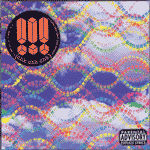 After blazing the trail for a cavalcade of indie dance-punk imitatorswith 2000's debut, the bi-coastal ensemble of !!! have only just nowreleased a follow-up. It's been a long four years, especially in termsof dance music and in the political climate, but with Louden Up Now,!!! have impressively bounced back from their recording lull with amasterful album. The title's imperative, followed by the group name'striple-shot of aggressive punctuation, conveys a forcefulness andurgency wholly appropriate to the agitated, edgy material on the album.Though the cover art displays an innocuous bright blue sky filled withoverlapping jet streams of exclamation points, the album itself isintensely political, violently so. Perhaps !!! are encouraging us tolouden our dissenting voices (or louden our dissenting music) until itfills the sky. In our current dystopian state of moralism, civilrights-backsliding and imperialist wars, it's unclear how a set ofexpletive-filled provocations to "pump up the volume and dance" canhelp, but that doesn't stop vocalist Nic Offer from trying. "U can tellthe president 2 suck my fucking dick" and "all U fucking squares bettersay your fucking prayers" are among some of the colorful metaphorsemployed in the lyrics, which shout down Bush, Blair, Giuliani,Christianity and censorship with equal zeal. The music is denselyproduced, with smoother edges than their previous work. It henceforthhas less of a live feel than the first album, with many elementssounding decidedly more synthetic. That said, I recently saw them playsome of this material live, and they pull it off quite well without theuse of a pre-programmed laptop. !!! continue to incorporate the richlydetailed dub-influenced sound of their sister band Out Hud, while stillmaintaining a jagged dissonance distinctly their own. Other than the"Giuliani" single, all of the tracks on Louden are newrecordings, with "Shit Scheisse Merde" forming the 15-minutecenterpiece, a three-part epic that travels from super-sexualizedPrince-influenced funk to the very heights of Giorgio Moroder disco tothe Dionysian depths of drugged-out club music. It's an incrediblydecadent sound, the throbbing bassline riding along to the pulse offrenzied, adrenaline-pumped, sweat-drenched human dancing. Elsewhere onthe album, Offer assures us that he doesn't "give a fuck" or "a shitabout that motherfucking shit," but I don't believe it. I believe hecares deeply, as his vituperative, politically-charged lyrics prove.!!! believe that the oncoming revolution can and will be birthed in theecstatic gyrations of dance culture, that true dissent can be nursed indarkness, and with the superlative Louden Up Now, they attempt to plant the first seed. -
After blazing the trail for a cavalcade of indie dance-punk imitatorswith 2000's debut, the bi-coastal ensemble of !!! have only just nowreleased a follow-up. It's been a long four years, especially in termsof dance music and in the political climate, but with Louden Up Now,!!! have impressively bounced back from their recording lull with amasterful album. The title's imperative, followed by the group name'striple-shot of aggressive punctuation, conveys a forcefulness andurgency wholly appropriate to the agitated, edgy material on the album.Though the cover art displays an innocuous bright blue sky filled withoverlapping jet streams of exclamation points, the album itself isintensely political, violently so. Perhaps !!! are encouraging us tolouden our dissenting voices (or louden our dissenting music) until itfills the sky. In our current dystopian state of moralism, civilrights-backsliding and imperialist wars, it's unclear how a set ofexpletive-filled provocations to "pump up the volume and dance" canhelp, but that doesn't stop vocalist Nic Offer from trying. "U can tellthe president 2 suck my fucking dick" and "all U fucking squares bettersay your fucking prayers" are among some of the colorful metaphorsemployed in the lyrics, which shout down Bush, Blair, Giuliani,Christianity and censorship with equal zeal. The music is denselyproduced, with smoother edges than their previous work. It henceforthhas less of a live feel than the first album, with many elementssounding decidedly more synthetic. That said, I recently saw them playsome of this material live, and they pull it off quite well without theuse of a pre-programmed laptop. !!! continue to incorporate the richlydetailed dub-influenced sound of their sister band Out Hud, while stillmaintaining a jagged dissonance distinctly their own. Other than the"Giuliani" single, all of the tracks on Louden are newrecordings, with "Shit Scheisse Merde" forming the 15-minutecenterpiece, a three-part epic that travels from super-sexualizedPrince-influenced funk to the very heights of Giorgio Moroder disco tothe Dionysian depths of drugged-out club music. It's an incrediblydecadent sound, the throbbing bassline riding along to the pulse offrenzied, adrenaline-pumped, sweat-drenched human dancing. Elsewhere onthe album, Offer assures us that he doesn't "give a fuck" or "a shitabout that motherfucking shit," but I don't believe it. I believe hecares deeply, as his vituperative, politically-charged lyrics prove.!!! believe that the oncoming revolution can and will be birthed in theecstatic gyrations of dance culture, that true dissent can be nursed indarkness, and with the superlative Louden Up Now, they attempt to plant the first seed. - 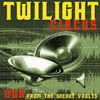 It was only seven years ago that then bassist/drummer of the Legendary Pink Dots, Ryan Moore, was premiering his Twilight Circus Dub Soundsystem in front of unsuspecting American LPD audiences. He was a long-haired joker prancing around on bass, with pocket theremin, and playing the drums along with hypnotic dub loops and saying whatever came to mind on the mic. ("Welcome to Gothic Jamaica!," "Give it up for the Monica Lewinsky chorus!," etc,...) In the time since, over ten albums of material have surfaced along with a handful of singles and collaborative projects. Moore has gone from being known for his comic antics as the primary rhythmatist of the Dots to one of the most critically acclaimed producers of authentic dub in the modern age. This recognition isn't unwarranted: none of the recordings as Twilight Circus is anything less than top-notch.
It was only seven years ago that then bassist/drummer of the Legendary Pink Dots, Ryan Moore, was premiering his Twilight Circus Dub Soundsystem in front of unsuspecting American LPD audiences. He was a long-haired joker prancing around on bass, with pocket theremin, and playing the drums along with hypnotic dub loops and saying whatever came to mind on the mic. ("Welcome to Gothic Jamaica!," "Give it up for the Monica Lewinsky chorus!," etc,...) In the time since, over ten albums of material have surfaced along with a handful of singles and collaborative projects. Moore has gone from being known for his comic antics as the primary rhythmatist of the Dots to one of the most critically acclaimed producers of authentic dub in the modern age. This recognition isn't unwarranted: none of the recordings as Twilight Circus is anything less than top-notch. Longtime friend and fan of the Legendary Pink Dots, Freek Kinkelaar hastastefully tied up some loose ends with this five-track collection.These tracks represent a looser, more experimental sound that the Dotswould, most likely due to their length, leave them on cassettecompilations rather than include them on their vinyl LPs. "ThePuncline" is a rarity few people have heard, first released back in1983 on a legitimate Italian cassette-only various artsits collectioncalled The Voice, in a limited edition of 300 copies, later to be collected on the unofficial Italian cassette-only LPD compilation, Fragments 1."Close Your Eyes, You Can Be a Space Captain" has appeared in a fewplaces, but this 11+ minute version was the one from 1983 originallyfound on Volume Three of the infamous Rising from the Red Sandtapes from Third Mind. "The People Tree" is a personal favorite, asthis sound-effects laden 23+ minute piece only graced side two of LPD'sTraumstadt 4. Here, loud jet engines and alien synth drips likethe more trippy interludes of some of the early Tear Garden stuff,while demented audio washes battle loudness and silence in an almosttribute-like fashion to Nurse With Wound's Homotopy To Marie,primitive electronics mimic early video games, and quirky instrumentalkeyboard melodies couldn't be mistaken for anybody other than the Dots.It irked me when side a ("Premonition 18") surfaced on Stained Glass Soma Fountainswithout "The People Tree," so this track is warmly welcomed by me tofinally be available on CD. The brief (98 second) track "March" was theonly exclusive track on the Dots on the Eyes LPD cassette-onlycompilation from 1981 so its inclusion ties up that loose end, whilethe 30 minute "Premonition 15" appeared on the Zamizdat Trade Journal,originally released in 1986, but opens the door to a couple more tracksstill unavailable. "Premonition 15" starts off with a lot of unexpectedguitar work, eventually mixing in the violin bits from "The Lovers(Part two)" along with other early LPD tunes here and there on top ofother sound effects and aural tampering. Be warned that theserecordings are not the original master recordings painstakinglyrestored to some super high fidelity, but recordings that weren't greatto begin with, and Raymond Steeg has done a find job of getting them atleast sound as good as they could have on the original tape releases.The packaging is tasteful but somewhat flimsy and needs to be cared forvery cautiously. I'm not displeased in the least. Crushed Memories is one of the gems for fans at the merch table for this tour as the disc is nearly impossible to find in any store.
Longtime friend and fan of the Legendary Pink Dots, Freek Kinkelaar hastastefully tied up some loose ends with this five-track collection.These tracks represent a looser, more experimental sound that the Dotswould, most likely due to their length, leave them on cassettecompilations rather than include them on their vinyl LPs. "ThePuncline" is a rarity few people have heard, first released back in1983 on a legitimate Italian cassette-only various artsits collectioncalled The Voice, in a limited edition of 300 copies, later to be collected on the unofficial Italian cassette-only LPD compilation, Fragments 1."Close Your Eyes, You Can Be a Space Captain" has appeared in a fewplaces, but this 11+ minute version was the one from 1983 originallyfound on Volume Three of the infamous Rising from the Red Sandtapes from Third Mind. "The People Tree" is a personal favorite, asthis sound-effects laden 23+ minute piece only graced side two of LPD'sTraumstadt 4. Here, loud jet engines and alien synth drips likethe more trippy interludes of some of the early Tear Garden stuff,while demented audio washes battle loudness and silence in an almosttribute-like fashion to Nurse With Wound's Homotopy To Marie,primitive electronics mimic early video games, and quirky instrumentalkeyboard melodies couldn't be mistaken for anybody other than the Dots.It irked me when side a ("Premonition 18") surfaced on Stained Glass Soma Fountainswithout "The People Tree," so this track is warmly welcomed by me tofinally be available on CD. The brief (98 second) track "March" was theonly exclusive track on the Dots on the Eyes LPD cassette-onlycompilation from 1981 so its inclusion ties up that loose end, whilethe 30 minute "Premonition 15" appeared on the Zamizdat Trade Journal,originally released in 1986, but opens the door to a couple more tracksstill unavailable. "Premonition 15" starts off with a lot of unexpectedguitar work, eventually mixing in the violin bits from "The Lovers(Part two)" along with other early LPD tunes here and there on top ofother sound effects and aural tampering. Be warned that theserecordings are not the original master recordings painstakinglyrestored to some super high fidelity, but recordings that weren't greatto begin with, and Raymond Steeg has done a find job of getting them atleast sound as good as they could have on the original tape releases.The packaging is tasteful but somewhat flimsy and needs to be cared forvery cautiously. I'm not displeased in the least. Crushed Memories is one of the gems for fans at the merch table for this tour as the disc is nearly impossible to find in any store.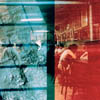 Though he probably received more recognition last year for his production work on Dean Roberts' breathtaking Be Mine Tonight,Valerio Tricoli was also busy creating one of the more substantialmusique concrète works I've heard in quite a while. The title aloneshould transmit the charm and the wayward beauty of this piece, itsquestions projecting both the violence of discovery and the resigned,rhetorical penance of shame and acceptance. Tricoli's music becomes themissing thought dots between these two inquisitives, a journey ofself-reflection and detachment. Revealingly, a three-dotted reply wasall that I, at least, could utter after sitting with the disc's40+ minutes (advertised as only 19, another of Tricoli's warpingtactics, anything but playful). The artist works outside of thehyper-lyrical or hyper-visceral styles that seem to dominate concrètepractice these days; his removed approach places the music withinmemory's shadowy domain, distanced but strangely present, like a déjàvu experience. This is not audio-surrealism per say, but something moresomber and gratingly nostalgic. The disc's first section could begin inthe room of some shaky continental hotel, slowly and secretly coloredin with disembodied hallway voices and the abrupt activity of antiquedoor latches. The voices will continue throughout the piece,contributing more to a regenerating wave of commotion than any kind offoundation, thematic or at all grounding. The music rides this wave asaboard a virtual history of meaningless conversation, essential whitenoise against which all that is individual or discernable in the piecemust be measured. There is certainly an individual, very human presencein this work, but one that seems always hidden, revealing itselfgingerly though the segmented, even lush sounds of rustling and lightknocking spaced across the whole. Tricoli also attaches some of hisinventive melodic hesitations at points during the disc, via bell tonesand steady, thin drones, shifting certain moments into sudden dramaticrelief, as if caught in a cinematic lens. Did They? Did I?stays very much outside the listening space; this music enacts a quietand impossible ambiance, capturing those subtle, telling degrees bywhich our memory is bound. It rises to shock only when cool anddeceptive recovery is within reach and reveals only for secondsanything that could be called recognizable.
Though he probably received more recognition last year for his production work on Dean Roberts' breathtaking Be Mine Tonight,Valerio Tricoli was also busy creating one of the more substantialmusique concrète works I've heard in quite a while. The title aloneshould transmit the charm and the wayward beauty of this piece, itsquestions projecting both the violence of discovery and the resigned,rhetorical penance of shame and acceptance. Tricoli's music becomes themissing thought dots between these two inquisitives, a journey ofself-reflection and detachment. Revealingly, a three-dotted reply wasall that I, at least, could utter after sitting with the disc's40+ minutes (advertised as only 19, another of Tricoli's warpingtactics, anything but playful). The artist works outside of thehyper-lyrical or hyper-visceral styles that seem to dominate concrètepractice these days; his removed approach places the music withinmemory's shadowy domain, distanced but strangely present, like a déjàvu experience. This is not audio-surrealism per say, but something moresomber and gratingly nostalgic. The disc's first section could begin inthe room of some shaky continental hotel, slowly and secretly coloredin with disembodied hallway voices and the abrupt activity of antiquedoor latches. The voices will continue throughout the piece,contributing more to a regenerating wave of commotion than any kind offoundation, thematic or at all grounding. The music rides this wave asaboard a virtual history of meaningless conversation, essential whitenoise against which all that is individual or discernable in the piecemust be measured. There is certainly an individual, very human presencein this work, but one that seems always hidden, revealing itselfgingerly though the segmented, even lush sounds of rustling and lightknocking spaced across the whole. Tricoli also attaches some of hisinventive melodic hesitations at points during the disc, via bell tonesand steady, thin drones, shifting certain moments into sudden dramaticrelief, as if caught in a cinematic lens. Did They? Did I?stays very much outside the listening space; this music enacts a quietand impossible ambiance, capturing those subtle, telling degrees bywhich our memory is bound. It rises to shock only when cool anddeceptive recovery is within reach and reveals only for secondsanything that could be called recognizable.  My first exposure to the music of Thomas Brinkmann came in 1999 when I purchased the Adria/Blindsplit remix 12" done for Force Inc. with notorious sound pirateScanner. Anyone familiar with that understated meeting of great minimaltechno minds will surely appreciate what Brinkmann has to offer withhis latest release on the quirky Max Ernst label. Although the pressrelease for Tokyo + 1 details a kind of pretentious,quasi-academic take on the album typically found in pieces thatincorporate field recordings, the actual liner notes in the booklet arestripped of any such context with only a brief mention of themultinational sound source origins, allowing casual listeners toappreciate the nine tracks here on their own terms. Considering thatthis is a Thomas Brinkmann album, a respectable level ofexperimentation and creativity is applied to both the sound art collagepieces as well as the more conventional dancier tracks, achieving anadmirable balance. "109 Competition" lumps together snippets and loopsfrom what sounds like a Tokyo arcade into a chaotic yet surprisinglyrhythmic mix of simulated laser gunfire, dance-pop video games,conversational chatter, and a Ja Rule/Ashanti duet. While that may notseem like the most "musical" stew to the uninitiated, this solidembodiment of pop culture plunderphonics will delight found sound anddifficult listening fanatics. The pleasant tech-house ditty "3 st 2Shinjuku" somewhat recalls Brinkmann's work as Soul Center though itmaintains a proud otherness with some unexpected sample of the Pokemoncharacter Pikachu. "Love Song" offers the most gratifying result ofBrinkmann's work here, with crashing waves of unruly noise combatingagainst, submitting to, and merging with a dark stompy beat that wouldreceive a warm dancefloor welcome in the bowels of a warehouse rave.While many techno-savvy geeks might currently be salivating over theBrinkmann mixed Tour De Traum compilation, the less accessible yet thoroughly satisfying Tokyo +1 should not be overlooked.
My first exposure to the music of Thomas Brinkmann came in 1999 when I purchased the Adria/Blindsplit remix 12" done for Force Inc. with notorious sound pirateScanner. Anyone familiar with that understated meeting of great minimaltechno minds will surely appreciate what Brinkmann has to offer withhis latest release on the quirky Max Ernst label. Although the pressrelease for Tokyo + 1 details a kind of pretentious,quasi-academic take on the album typically found in pieces thatincorporate field recordings, the actual liner notes in the booklet arestripped of any such context with only a brief mention of themultinational sound source origins, allowing casual listeners toappreciate the nine tracks here on their own terms. Considering thatthis is a Thomas Brinkmann album, a respectable level ofexperimentation and creativity is applied to both the sound art collagepieces as well as the more conventional dancier tracks, achieving anadmirable balance. "109 Competition" lumps together snippets and loopsfrom what sounds like a Tokyo arcade into a chaotic yet surprisinglyrhythmic mix of simulated laser gunfire, dance-pop video games,conversational chatter, and a Ja Rule/Ashanti duet. While that may notseem like the most "musical" stew to the uninitiated, this solidembodiment of pop culture plunderphonics will delight found sound anddifficult listening fanatics. The pleasant tech-house ditty "3 st 2Shinjuku" somewhat recalls Brinkmann's work as Soul Center though itmaintains a proud otherness with some unexpected sample of the Pokemoncharacter Pikachu. "Love Song" offers the most gratifying result ofBrinkmann's work here, with crashing waves of unruly noise combatingagainst, submitting to, and merging with a dark stompy beat that wouldreceive a warm dancefloor welcome in the bowels of a warehouse rave.While many techno-savvy geeks might currently be salivating over theBrinkmann mixed Tour De Traum compilation, the less accessible yet thoroughly satisfying Tokyo +1 should not be overlooked. 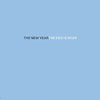 The New Year crafts songs that hover in the space between thoughtfulconsideration and expression. It is the music of anticipation andpatient contemplation, a flurry of intention and fervor just a quantumleap away from coalescing into a deluge of expression. This moment ofimpeccable meaning is fraught with dusky reserve, held close only toemerge as snippets of melody and song. On their second release (notincluding the Kadane brothers Bedhead experience, of which The New Yearis an evolution of), the band dwells in extremely familiar territory,their slow core roots dug deep and spread wide. The opening track, "TheEnd is Not Near" is shocking, not in that the song is a departure ordynamic leap from the band's sound, but in that it sounds frightfullylike Elliot Smith singing from the great beyond. Once this isreconciled, the song is actually a highlight of the album, a touchingtribute in sound and concept to the late songwriter and a feather inthe cap of the album. "Chinese Handcuffs" strikes a comfortable balancebetween the neat structure of the song and the shimmering elaborationof that structure through a delightfully dexterous melody. When themelody lurches upward, it pulls the whole song along with it. "Disease"builds from an aloof, meditative melody into a full-blown cascade ofclattering guitars, reverberating off the inside of the skull anddrifting into a dreamlike ambiance, with the vocals slipping justbeneath the mix and subtly etching an impression on the mind. Here, ason "Chinese Handcuffs," the distinct guitar melodies of the songselevate them beyond the simple sedate skeletons that are dulyconstructed by the laconic singing and delicate accompaniment. The NewYear drifts through their songs with an even-keeled temperment that isoccasionally too sleepy for its own good. Several tracks, like theopener, manage to explore this delicate, patient space with an elementof control and direction. Songs like "Stranger to Kindness," however,simply feel adrift, as if the component pieces are slipping away fromone another. The End is Near is a competent work with several moments of superb songcraft that is sadly connected by loose ends and slack lines.
The New Year crafts songs that hover in the space between thoughtfulconsideration and expression. It is the music of anticipation andpatient contemplation, a flurry of intention and fervor just a quantumleap away from coalescing into a deluge of expression. This moment ofimpeccable meaning is fraught with dusky reserve, held close only toemerge as snippets of melody and song. On their second release (notincluding the Kadane brothers Bedhead experience, of which The New Yearis an evolution of), the band dwells in extremely familiar territory,their slow core roots dug deep and spread wide. The opening track, "TheEnd is Not Near" is shocking, not in that the song is a departure ordynamic leap from the band's sound, but in that it sounds frightfullylike Elliot Smith singing from the great beyond. Once this isreconciled, the song is actually a highlight of the album, a touchingtribute in sound and concept to the late songwriter and a feather inthe cap of the album. "Chinese Handcuffs" strikes a comfortable balancebetween the neat structure of the song and the shimmering elaborationof that structure through a delightfully dexterous melody. When themelody lurches upward, it pulls the whole song along with it. "Disease"builds from an aloof, meditative melody into a full-blown cascade ofclattering guitars, reverberating off the inside of the skull anddrifting into a dreamlike ambiance, with the vocals slipping justbeneath the mix and subtly etching an impression on the mind. Here, ason "Chinese Handcuffs," the distinct guitar melodies of the songselevate them beyond the simple sedate skeletons that are dulyconstructed by the laconic singing and delicate accompaniment. The NewYear drifts through their songs with an even-keeled temperment that isoccasionally too sleepy for its own good. Several tracks, like theopener, manage to explore this delicate, patient space with an elementof control and direction. Songs like "Stranger to Kindness," however,simply feel adrift, as if the component pieces are slipping away fromone another. The End is Near is a competent work with several moments of superb songcraft that is sadly connected by loose ends and slack lines. 
